Saltwater and Estuary Fishing
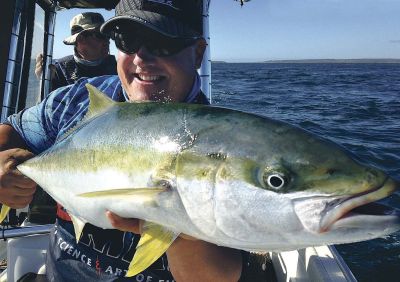 Presented from Issue 114, February 2015
Presented from Issue 114, February 2015
Jamie Harris, like many anglers from the north west coast, is a fishing nut. And also like many Burnie and NW coasters he has spent many hours driving too and from the east coast chasing game fish. Whilst the nearby west coast has some great fishing it is often wild and unfishable. Bass Strait has some good mako and gummy fishing and Australian salmon and flathead as well. But recently another fish has arrived on the scene that is as good a game fish as there is, great to eat, tough to catch and now it seems readily available – yellowtail kingfish.
Jamie chased these as long ago as ten years, like many anglers, around Elephant Rock off St Helens. Elephant Rock was one of the first areas where kingfish were regularly caught. Clarke Island, below Cape Barren and Flinders Island was also a hot spot, but a lot of boat was needed to get there. So it was a bit elusive but that only hardens the resolve of keen anglers.
- Written by Stephen Smith - Rubicon Web and Technology Training
- Parent Category: Articles
- Category: Saltwater and Estuary Fishing
- Hits: 8842
Read more: Yellowtail Kingfish - Mike Stevens interviews Jamie Harris
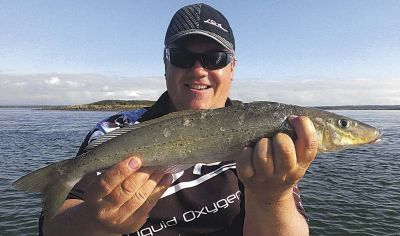 Presented from Issue 113, December 2014
Presented from Issue 113, December 2014
It all started a few years ago when a small number of King George Whiting were caught in Georges Bay on a few different occasions. We didn’t think too much of it at the time as lots of different species turn up in the bay quite often, some continue to be caught and some come and go. But we kept our eye on it, monitored catch rates and anecdotal evidence over the next few years and found that all of a sudden there were more and more fish being seen. Before you know it we have now had a regular King George Whiting season for about 4 solid years and hopefully will now be another permanent species to add to the ever growing list that is caught out of St Helens . Some would say that King George Whiting are the perfect fish, they fight hard and are great sport, are a fantastic table fish, require minimal equipment, can be caught by all ages and with a little bit of knowledge and know how are not difficult to catch.
- Written by Stephen Smith - Rubicon Web and Technology Training
- Parent Category: Articles
- Category: Saltwater and Estuary Fishing
- Hits: 9788
Read more: The King is alive - King George Whiting - Jamie Henderson
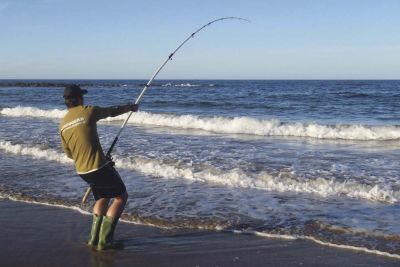 Presented from Issue 112, October 2014
Presented from Issue 112, October 2014
Burnie, the unofficial capital of the north-west coast, through the depths of Winter, can be dark and dreary. However it is still exceptionally productive on the angling front. While snow capped St. Valentines Peak and its surroundings, rain and wind pounded the coast for the majority of the cooler months. Surprisingly however, the fishing, particularly in the coastal rivers, has been encouraging. Now, as spring launches into effect and the conditions around us begin to warm, the fishing will only improve even more, preparing us recreational anglers for a very productive summer.
At the beginning of the cold snap that buried the highest reaches of the state in snow, after climbing a mountain or two, I decided to start hitting the local rivers mouths, creeks and other coastal haunts such as my childhood favourite Red Rock in Cooee and the Emu River, Fern Glade in particular. Targeting trout mostly, due to the opening of the season, I really found it difficult to get my first fish on the board!
- Written by Stephen Smith - Rubicon Web and Technology Training
- Parent Category: Saltwater and Estuary Fishing
- Category: North West Coast
- Hits: 10239
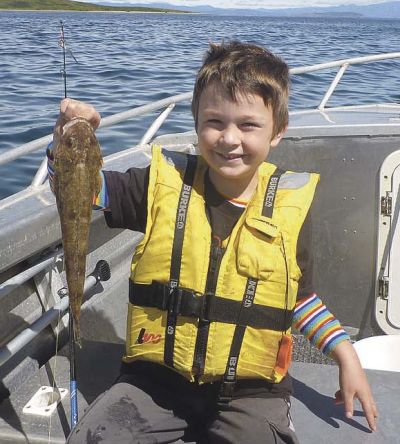 Presented from Issue 112, October 2014
Presented from Issue 112, October 2014
The warmer part of spring is now upon us and for the saltwater angler, this signals the start of some fine fishing days ahead. Here, Matt Byrne outlines some of his very best spring saltwater options.
I’m not too sure about you, but as a keen saltwater angler, winter in Tasmania can be a long and drawn out affair as the saltwater cools down and species disappear to the depths or in some cases, leave the state entirely and follow the currents in search of warmer water! Whilst this past winter we have had an unusually long southern bluefin tuna season, more often than not we spend our time doing jobs around the house and await October as it often signals the first real commencement of our saltwater fishing season.
- Written by Stephen Smith - Rubicon Web and Technology Training
- Parent Category: Articles
- Category: Saltwater and Estuary Fishing
- Hits: 4266
Read more: Saltwater in Spring - Time to take the family fishing - Matt Byrne
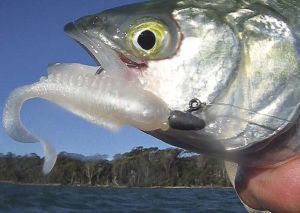 Presented from Issue 110, June 2014
Presented from Issue 110, June 2014
Winter is a time when we tend to slow down, the days are shorter and the weather is predictably cold, wet and windy. Some of us stop fishing all together and are happy to wait out the winter while others eagerly await the winter run of juvenile Australian Salmon. These fish often sneak into the quiet estuaries that are now free of summer anglers, skiers and jet skiers. They come into these estuaries to feed on the scattered bait schools, worms and prawns that live over the sea grass and shallow rocky shorelines.
- Written by Stephen Smith - Rubicon Web and Technology Training
- Parent Category: Saltwater and Estuary Fishing
- Category: Australian Salmon
- Hits: 6912
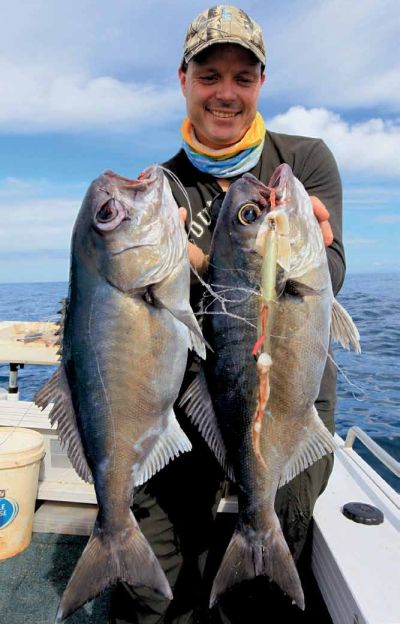 Presented from Issue 108, February 2014
Presented from Issue 108, February 2014
Blue Eye Trevalla is the name most used by Tasmanians to describe Hyperoglyphe Antarctica, a fish species found in all southern oceans and like most widely distributed fish they have come to be known by a variety of different names. Blue Cod, Antarctic butterfish, Bluenose Warehou, Deepsea Trevally, Blue Nosed Sea Bass or Deep Sea Trevalla, are all names used to describe one of Tasmania’s finest eating fish. It is regularly seen on restaurant menus — and as a line caught fish it is unlikely it is overfished.
- Written by Stephen Smith - Rubicon Web and Technology Training
- Parent Category: Articles
- Category: Saltwater and Estuary Fishing
- Hits: 18016
Read more: Blue-eye Trevalla - Tasmania’s finest table fish - Simon Hedditch
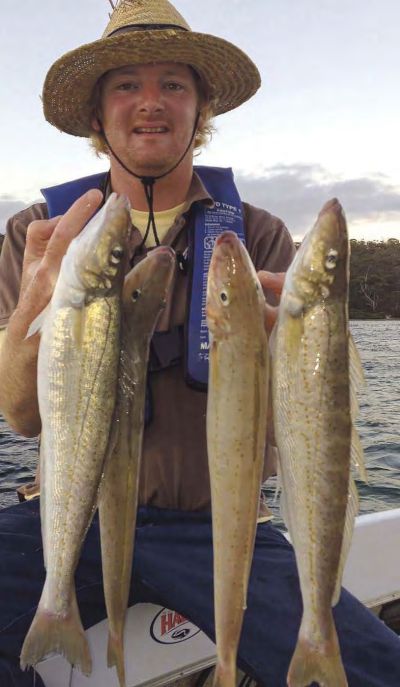 Presented from Issue 107, December 2013
Presented from Issue 107, December 2013
If someone had suggested to me 10 years ago that we would experience ‘whiting fever’ and see anglers catching King George whiting up to 60cm long in Tasmania I would have put it down as a bit of wishful thinking — I guess things change.
Here is a typical scenario in my shop as November approaches. I am in my Tackle Shop working as usual when the phone rings.
Me: Good morning this is St Helens Bait and Tackle.
Caller: Hi, me and a few buddies are heading down on the weekend and wondering if the KG whiting are running?
I don’t get ‘do you ever catch any?’ or ‘are there whiting in the bay?’ Now there is the expectation of a whiting season every year and I am receiving call, after call, after call.
- Written by Stephen Smith - Rubicon Web and Technology Training
- Parent Category: Articles
- Category: Saltwater and Estuary Fishing
- Hits: 8808
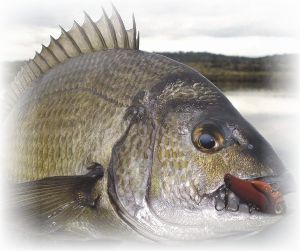 Presented from Issue 106, October 2013
Presented from Issue 106, October 2013
The start of daylight savings excites the trout fisher as it signifies the general start to the mayfly season; an insect that causes many a trout angler to become obsessed, chasing that hatch like a moth to a flame. Many anglers who chase trout also target bream but at this time of year, as trout anglers are in such a mayfly-induced trance, thoughts of bream become nullified. For the sneaky bream angler, this is a gift, paving the way for cheeky little solo sessions and all-round good times for you and your mates!
- Written by Stephen Smith - Rubicon Web and Technology Training
- Parent Category: Saltwater and Estuary Fishing
- Category: Bream
- Hits: 6716
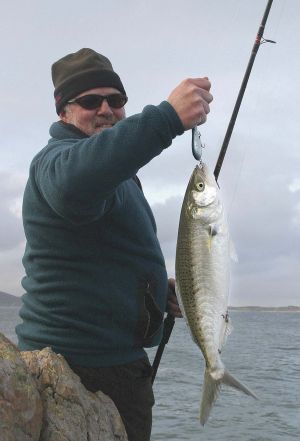 Presented from Issue 106, October 2013
Presented from Issue 106, October 2013
Whilst I have spent a lot of time fishing from the shore in recent times I have really enjoyed fishing from a kayak, so I will cover that as well.
Locations One of the absolute prime spots for Australian salmon in Tasmania is the northern part of the West Coast. You will see Marrawah on the map and close by are two of my favourite places, Nettley Bay and Sinking Rock, off the north eastern side of Green Point. These are consistently prime places as is both East and West Inlet, although I would favour West Inlet over the two.
- Written by Stephen Smith - Rubicon Web and Technology Training
- Parent Category: Saltwater and Estuary Fishing
- Category: Australian Salmon
- Hits: 10775
Read more: Australian salmon - Tasmania’s most popular sportfish - Rodney Howard
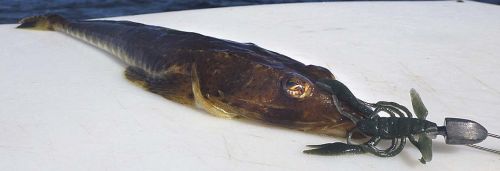 Presented from Issue 106, October 2013
Presented from Issue 106, October 2013
Warmer and longer days are what all Tasmanian fishers look forward to the most, as we head into the month of October. Here we explore what is in store for southern inshore anglers as we head into spring and how to do it using nothing other than the famous fish catching abilities of just some of the large Berkley range of soft plastics.
- Written by Stephen Smith - Rubicon Web and Technology Training
- Parent Category: Articles
- Category: Saltwater and Estuary Fishing
- Hits: 7404
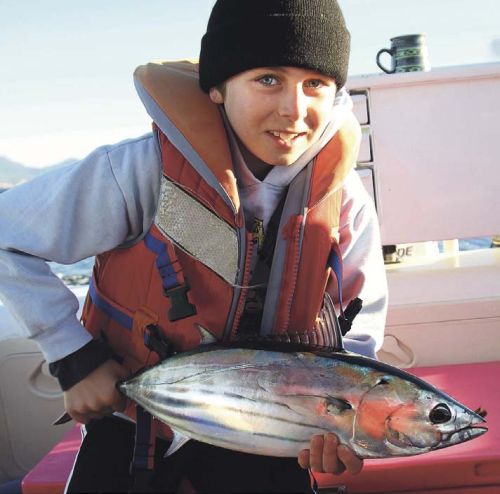 Presented from Issue 104, June 2013
Presented from Issue 104, June 2013
Swansea can quite rightly lay claim to be the Bream fishing capital of Tasmania. The nearby Swan River literally teems with Southern Black Bream, a renowned species that is valued highly, especially in recent years, for its sports fishing attributes.
But as the knowledgeable angler knows there is far more to attract the visiting fisherman to the seaside town than just Bream. The waters of Great Oyster Bay hold many, many species of fish. The more common species encountered in the bay are Sand and Tiger Flathead, Sand Whiting, Australian Salmon, Barracouta, Arrow and Calamari Squid, Gummy and School Shark, Jackass Morwong and plenty of Wrasse. Further out in the waters around Schouten Island and beyond pelagics, including Albacore, Striped, Southern Bluefin and Yellowfin Tuna are possibilities. Mako Shark are also quite common offshore for those wishing to target them. Deep sea fishers will be able to locate stocks of Striped Trumpeter, Blue Eye Trevalla and Gemfish with a little research.
- Written by Stephen Smith - Rubicon Web and Technology Training
- Parent Category: Saltwater and Estuary Fishing
- Category: East Coast
- Hits: 12865
Read more: Swansea - Fun, variety and a good feed - Peter Broomhall
Current TFBN
Click above for current issue content. The current issue of TFBN is extensive and topical. In Tackle Stores, Newsagents and by subscription.
Delivered to your door for $48 for 2 years (8 issues). To subscribe, send Mike $48 via www.paypal.com.au . (Basic instructions are here) The email is at Contact Us. Your address will be included from PayPal.
Or phone Mike with your c/c handy on 0418129949
Please ensure your details are correct, for Mike to organise delivery.
TFBN Newsletter Sign up Form
Why not submit an article ?
When you have finished for the day, why not have a brag about the ones that didn't get away! Send Mike an article on your fishing (Click here for contact details), and we'll get it published here. Have fun fishing - tasfish.com
Category Descriptions
Here is a list of all of the Article Categories. The number in Brackets, eg (13) is the number of articles. Click on Derwent River and all articles relating to the Derwent will be displayed in the central area.
Articles by Category
-
Rivers (3)
-
Saltwater and Estuary Fishing (149)
-
Kayak Fishing (34)
-
Lakes (1)
-
Great Lake (62)
-
Lake Leake (52)
-
Woods Lake (16)
-
Lake Augusta (11)
-
Huntsman Lake (13)
-
Lake Pedder and Gordon (10)
-
Lake Dulverton (5)
-
Lake Crescent (6)
-
Tooms Lake (10)
-
Lake Mackintosh (2)
-
Lake Barrington (5)
-
Little Lake (8)
-
Meadowbank Lake (5)
-
Lake King William (7)
-
Lake St Clair (2)
-
Western Lakes (12)
-
Arthurs Lake (35)
-
Lake Echo (7)
-
Four Springs (54)
-
Lake Sorell (7)
-
Lake Burbury (6)
-
Other Lakes (57)
-
Brushy Lagoon (18)
-
Little Pine Lagoon (5)
-
Penstock Lagoon (16)
-
Brumbys Creek (7)
-
-
Events (48)
-
Estuary Fishing (0)
-
Coastal Catches (46)
-
Super Trawler (46)
-
IFS, DPIPWE, MAST and Peak Bodies (435)
-
Commercial Interests (98)
-
Other (24)
-
TFBN Back Issues (8)
-
Fly Fishing (67)
-
Trout Fishing (250)
-
Meteorology and Weather (8)
-
Jan’s Flies (50)
-
Tuna Fishing and other Game Fishing (86)
-
Cooking Fish (19)
-
Fishing Information (1)
-
Fishing Books (8)
-
Videos (5)
-
Tackle, Boats and other Equipment (146)
-
World Fly Fishing Championship 2019 (2)
Popular Tags
windyty.com
Visit https://www.windyty.com/
Rubicon Web and Technology Training
Hello everyone, I thought it would be a good time to introduce myself.
My name is Stephen Smith and I have been managing the website tasfish.com since May 2009.
It has been an epic journey of learning and discovery and I am indebted to Mike Stevens for his help, support and patience.
I am developing a new venture Rubicon Web and Technology Training ( www.rwtt.com.au ). The focus is two part, to develop websites for individuals and small business and to train people to effectively use technology in their everyday lives.
Please contact me via www.rwtt.com.au/contact-me/ for further information - Stephen Smith.
From the Archives ... (last chance)
Sea Run Trout
Mid Sea-Run Season Report
Sea-run trout fishing this year got off to a cracking start in most areas, with the majority of anglers employing nearly every trout fishing technique to secure fish in local estuaries statewide.
Even those anglers fishing the "off-season" lower down in our estuaries for sea-trout commented on the number of fish moving in early August.



